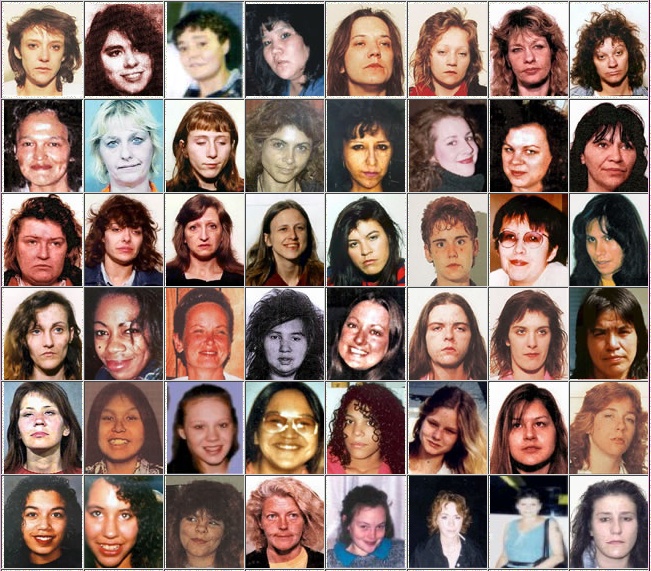The iron lady Hillary Clinton once exclaimed with ambitious tone” Women are the largest untapped reservoir of talent in the world.” Today, no one can deny the fact that countries where women have been empowered and hold country’s executive positions are progressing by leaps and bounds. Prime Minister of New Zealand Jacinda Ardern, Prime Minister of Bangladesh Sheikh Hasina Wajid, Sanna Marrin, Prime Minister of Denmark Mette Frederiksen, President of Greece Katerina Sakellaropoulou and Ex-Chancellor of Germany Angela Merkel are glaring example in this regard. One can observe the sound performance, development, culture of transparency and accountability in these regions where women are holding higher position. But irony of fate is that we developing countries still fail to realize the worth, value, power and strength of women.
The phrase ‘missing women’ first coined by the Nobel Prize winner Amartya Sen who figured out that millions of women surprisingly disappeared in India owing to the curse of patriarchy. The noted phrase ‘missing women’ refers to sex ratio in which Sen tried to convince the rationale that day by day female population is proportionately shrinking. He postulated that from sex-selective abortion to infanticide, there is a patriarchal social and culture practices in which son-preferences is considered as a top cultural norm. The phenomena of devaluation of females’ population does not standstill here with sex-selective abortion. If a female child get lucky to be born and survive from the curse of patriarchy, then she would face challenges in accessibility and availability of health facilities, quality education and political participation. For women, spheres are full of predicaments. From killing baby girls in the shape of sex selective abortion to forcefully marrying off a well-educated woman and throw them into marriage market, there is a vicious cycle of missing women. Pakistan, having a patriarchal culture, also practices these norms and values. From son- preference, sex-selective abortion and devaluation of women sex to the marriage practices in the shape of dowry and Patrilocality, each and everything is revolved around the patriarchal structure.
In this regard, the malpractice of patrilocality and post-marriage residence consolidates this vicious cycle. After marriage, a well-educated and professional woman confronts bottlenecks to pursue jobs or any productive, academic or professional activity due to patrilocality under the patriarchal social practices, like all the time busy in-house chores, helping or serving in-laws. However, in developed countries, marriage life and personal life function parallel; women are allowed to do job or continue study post-marriage.
According to Pakistan Bureau of statistic 2021, there is only 25 percent female labor force participation in country. The rest of female population are compelled to live under the four walls of patriarchy. 48% percent of the population is female according to census of 2017. Thus, this low involvement of females in economic activities portrays a bleak picture. Because, out of 48 percent female population, only 25 percent population is engaged in contribution towards country’s economy and rest of them remained slothful and become dependent upon country’s economy. However, there is also an assumption that, in country’s rural areas, one can see females’ participation in agricultural activities. Thus, this little thing is insufficient to justify the gender disparity.
After marriage, the patriarchal social norms compel an educated female to sacrifice her dreams to help her in-laws in house chores. The problem is not with marriage institution but its specific expected social roles and practices which are associated only with female.
There is 60 percent literacy rate in Pakistan in which there is 47 percent female literacy according to Pakistan literacy rate report of 2021. Despite that, the bitter irony is that only 25% female can be seen in job sectors. Girls with MBBS, Engineering, Computer science, IT degrees along with distinction disappear in the job market. Each year, millions of girls do graduation, and obtain specialized credentials but remain idle. Moreover, there are only 7 percent women who hold financial account; irked, it shows a gloomy picture. Question arises what are the responsible factors which push such a large population into the four walls of patriarchy. After marriage, the patriarchal social norms compel an educated female to sacrifice her dreams to help her in-laws in house chores. The problem is not with marriage institution but its specific expected social roles and practices which are associated only with females. Owing to those roles, values and norms, not only female suffers but also country’s economy become fragile. But the irony of fate is that we have a culture of political mockery where the curse of patriarchy, and its implication, is taken for-granted, and is considered as a parody. Consequently, country suffers at each level, from fragility of morality to economic downturn.
According to Global Gender Gap report 2020, Pakistan was ranked at 143 out of 147. GGG measures the performances of a country on the indicators of economic participation, health facilities and political empowerment of women. In all these given indicators, Pakistan is lagging behind. As a result, on the one side, country’s soft image get tarnished, and on the other, country economic performance become downturn owing to untapped half population. It goes without saying that socio-economic and political development is directly associated with women empowerment. Countries, where women get empowered, flourish at the socio-economic and political levels. Today, Pakistan’s economy is at the stake of fragility and recession due to various reason but gender disparity is major one.
Bangladesh, an emerging economy of south Asia, introduced reforms, policies and did legislation for women empowerment to ensure the flourishment of its economy in 1990. Bangladesh used multi-faceted modus operandi. Today Bangladesh on the one side has crossed the neighboring states in socio-economic development. For this purpose, Sheikh Hasina, PM of Bangladesh, did a remarkable job to make sure the gender parity in her country by enhancing budget on women empowerment. She not only did myriad legislations and reform but also worked hard on female education. In the Global Gender Gap report of 2020, Bangladesh has crossed all south Asian state in the field of gender parity. As a result, today, one can see that Bangladesh is progressing by leaps and bounds.
Cut the long story short, it has been proven if a country wants development, improvement and progression, the key principle for this purpose is to engage its women population as well. It demands cogent plans and reforms to eradicate the curse of patriarchy from the root. In this regard, media plays a groundbreaking role in changing the patriarchal attitude and mentality of masses by highlighting the importance of women at the sphere of lives.























